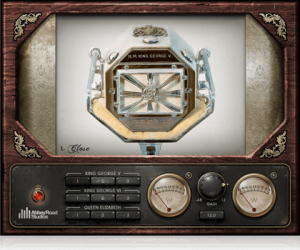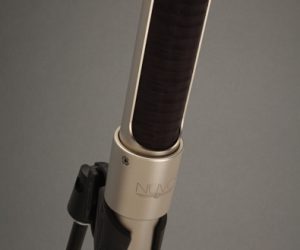
Mic Data 3: Self-Noise
Self-noise is perhaps the most useful specification. Nobody wants a noisy recording, and there’s only so much noise we will tolerate before we feel it distracts from the music.
Why Low Noise Is Important
Noise can be a burden. While a relatively noisy mic must be placed very close to the source to achieve an acceptable signal-to-noise ratio, a low noise mic gives you much greater freedom of placement. Low microphone noise, thus, is more than just a technicality. It is your creative “elbow room”.
For condenser microphones, noise is usually specified in terms of “equivalent noise level”. A more common term is “self-noise”, as this is the signal the microphone produces of itself, even when no sound source is present. The proper way to measure self-noise is to put the entire microphone into a soundproof container. However, some manufacturers simply measure the microphone without the capsule. The latter method gives (seemingly!) better figures.
Usually, self-noise is given in dB-A. The “A” stands for A-weighting, which is a method to simulate human perception. For instance, we’re much less sensitive to noise in the low frequencies than we are to noise in the mid-band, where the human voice resides. Reputable manufacturers such as Neumann give additional noise figures according to other (stricter) measurement standards, but just about any manufacturer will give A-weighted self-noise, which happens to be the measurement method that results in the lowest figures.
What’s A Good Self-Noise Figure?
Anything below 10 dB-A is extremely low noise. The exact figure is unimportant, as even a very quiet recording room will contribute quite a bit more ambient noise than 10 dB-A. Typically, extremely low self-noise figures are only found on modern day large diaphragm condenser mics, such as the Neumann TLM 103.
11-15 dB-A is still very good. You may be able to discern some very slight noise in critical applications. But usually, such noise is impossible to hear in the context of the whole mix. 11-15 dB-A is about as low a self-noise figure as you’ll find on a small diaphragm condenser (such as the Neumann KM 184) or an excellent large diaphragm condenser with tube electronics (such as the Neumann M 149 Tube).
16-19 dB-A is good enough for most purposes. You may hear some noise when you record relatively quiet instruments, but it’s usually unobtrusive.
20-23 dB-A is a pretty high self-noise figure for a studio microphone. This is an area where every decibel counts, because we’ve reached a noise level that’s clearly audible. Such noise figures may be acceptable when you record loud sources, but not for anything below speaking level.
24 dB-A and above: Such self-noise figures are unworthy of a studio microphone.
Self-noise is rarely specified for dynamic microphones. That’s because their noise performance is largely dependent on the microphone preamp used. As a rule of thumb: Dynamic microphones on an ultra-low noise preamp reach self-noise figures of about 18 dB-A.
Sound Samples
To illustrate self-noise, we recorded the ticking of a clock in an anechoic chamber.
Check out Neumann’s examples here.
Signal-To-Noise Ratio
Another way to document the noise performance is to specify the signal-to-noise ratio. But relative to what signal? The reference sound pressure level for noise measurements is 94 dB (which equals a sound pressure of 1 pascal). So you can simply calculate:
- Signal-to-noise (db-A) = 94 dB – self-noise (dB-A)
The actual signal-to-noise ratio in use, of course, depends on the sound pressure level of your sound source.
















RESPONSES